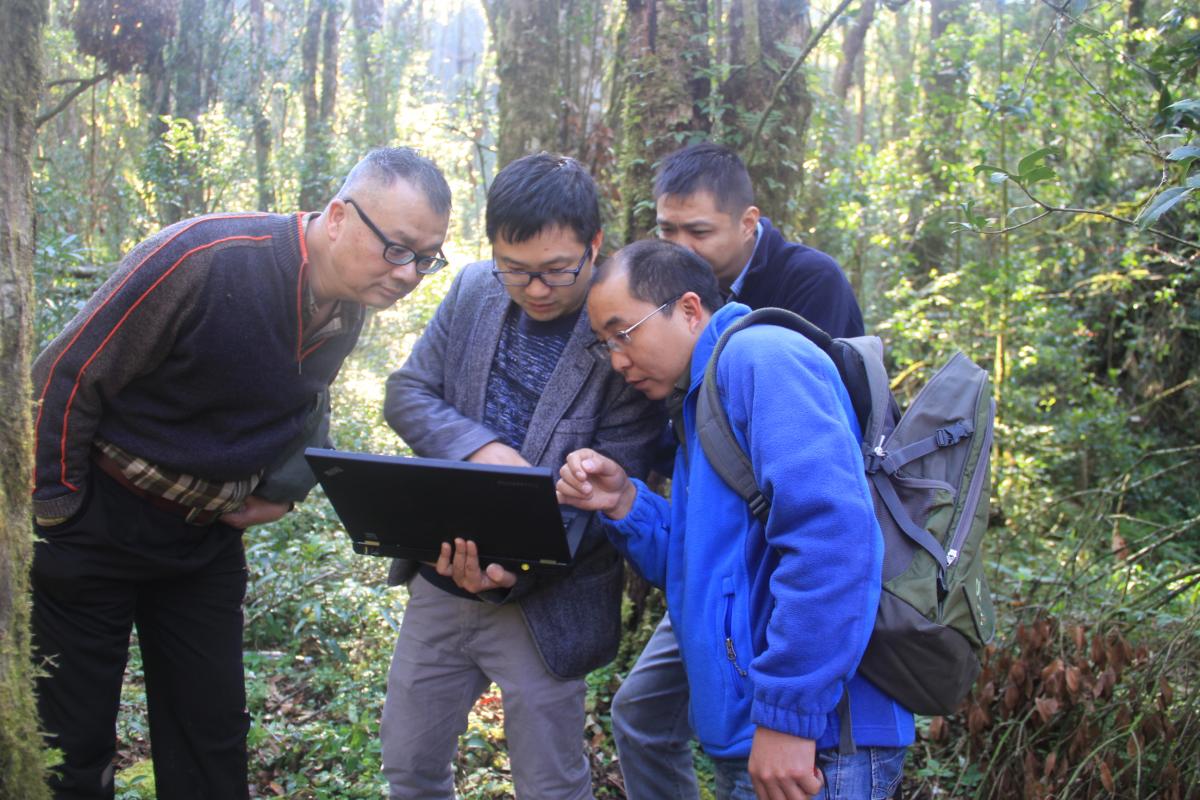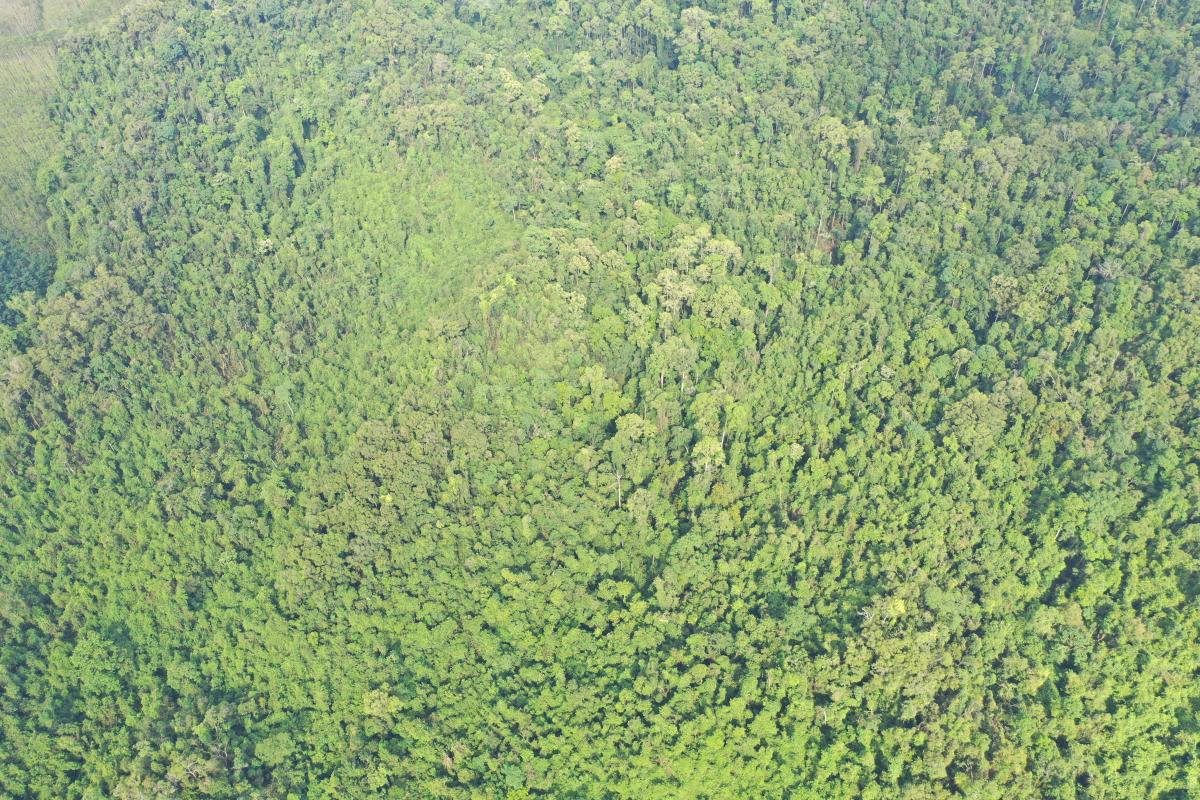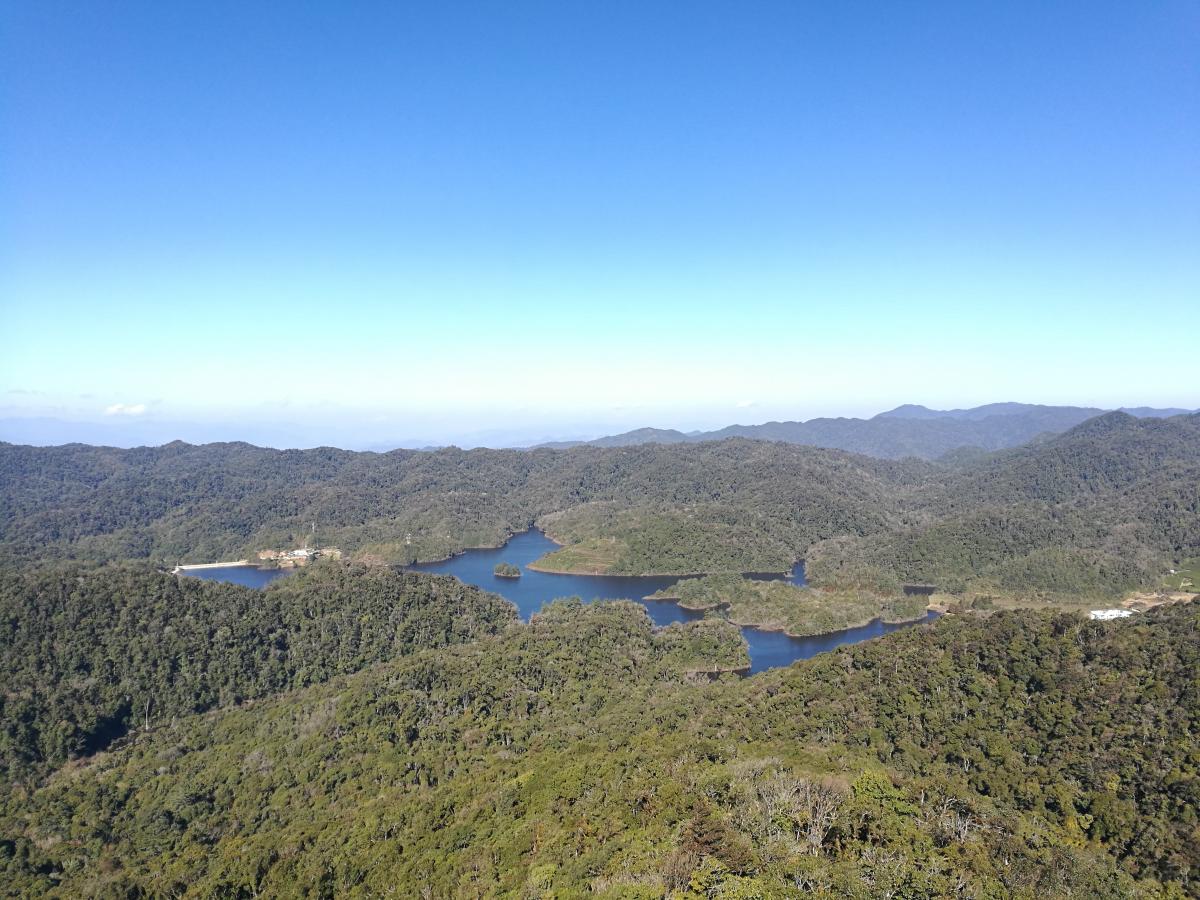Cao Min is a Professor at Xishuangbanna Tropical Botanical Garden (XTBG), Chinese Academy of Sciences (CAS). He is also PI of two ForestGEO plots in China: Xishuangbanna and Ailaoshan. He decided to set up a 1-ha plot in Xishuangbanna after visiting the 50-ha Pasoh FDP in Malaysia in the 1990s, and 13 years later, Min established a second plot in Xishuangbanna, this one covering an area of 20-ha and subscribing to ForestGEO’s census protocols. The Xishuangbanna plot is also a member of the Chinese Forest Biodiversity Network (CForBio). Collectively, Xishungbanna and Ailaoshan offer opportunities for methods training, MSc and PhD work, and postdoctoral research.
When did you realize you wanted to be a scientist/work in forest ecology? How did you decide to go down this career path?
I was born in Yunnan Province, southwest China, where huge mountains and rivers crisscross in longitudinal directions due to the uplift of the Himalayas in the north. As a child I was very curious about why trees differ between river banks and high ridges, and why some trees shed leaves while others do not in the winter. Fortunately for me, I was admitted to the department of biology in Yunnan University, which has a very strong research capacity in plant ecology. Under the supervision of teachers at both Braun-Blanquet School and America-English School I had my first experiences with some field excursions and forest surveys in local forests. I have had a great interest in this discipline because plant ecology can describe how tree species are organized in a given habitat – the question that I had been curious about since childhood. Later, I was lucky enough to be engaged in some more advanced studies in vegetation ecology at Freiburg University, Germany and Swiss Federal Institute of Technology (ETH), Switzerland. These experiences enhanced my understanding of the forest distribution patterns in different continents.

What led you down the path to your current job? What has been your biggest challenge in getting to this point in your career?
My enthusiasm was further ignited by several short trips and discussions with international forest ecologists (such as Profs. T.C. Whitmore, P. Ashton, and T. Nakashizuka) who came to visit the tropical forests in Yunnan. They all recommended study of long-term forest dynamics in correspondence to global change. My first visit to the Pasoh 50-ha plot in west Malaysia made me decide to establish a 1-ha plot in the tropical seasonal rain forest of Xishuangbanna in the middle of the 1990s (I wanted to do long-term, large-scale forest monitoring, but we had a big challenge in getting financial support at that time and so began with a 1-ha plot). Ultimately, we received funding from our institutions that enabled us to finish the census, and that census data allowed us to write papers. Publishing papers earned us recognition from international colleagues in tropical ecology, and this recognition amplified our ability to raise funds to construct a bigger plot to examine more significant questions.
When did you first get involved in the ForestGEO network?
In 2003, Dr. W. Chang of the US National Science Foundation (NSF) visited XTBG and traveled to the part of the field site near the China-Laos border that was dominated by Parahorea chinensis. He strongly recommended that we set up a regional ecosystem monitoring network based on large scale forest plots. Later on, the Biodiversity Commission of Chinese Academy of Sciences launched a project with the purpose of monitoring forest biodiversity dynamics in temperate, subtropical, and tropical forests, respectively. The name of this initiative is CForBio – the Chinese Forest Biodiversity Network. We became involved in this plan to set up a 20-ha plot in the dipterocarp forest in Xishuangbanna, southwest China (in the same region as our 1-ha plot, but at a different site), and our Xishuangbanna plot was the most species-rich of CForBio’s first four large scale plots. Dr. Stuart Davies kindly visited us during the plot construction and encouraged us to establish collaborations with the other 20 tropical forest dynamics plots that were already set up in different tropical countries through the Center for Tropical Forest Science (now ForestGEO) network. So we became a member after we accomplished the construction of our plot in 2007.

What is the most interesting or unique aspect of your site?
Yunnan Province is located in the southwest of China, bordering with Myanmar, Laos, and Vietnam. This region covers a great latitudinal gradient ranging from the Tibetan Plateau to mainland Southeast Asia, with an elevational difference of 6,660 m. The huge environmental heterogeneity harbors diverse biomes including subalpine (coniferous) forest in the north, subtropical evergreen broad-leaved forest in the middle, and tropical rain forest in the south. This unique gradient of the region facilitates research on the transitional patterns between forest ecosystem types in different climatic zones. Three forest dynamics plots (i.e. Lijiang, 25 ha, by Kunming Institute of Botany; Ailaoshan, 20 ha, by Xishuangbanna Tropical Botanical Garden; Xishuangbanna, 20 ha, by Xishuangbanna Tropical Botanical Garden) were built up based on the consideration mentioned above.
What questions are you currently addressing in your research/site?
Our current research is focused on: 1) Response of tree demographic dynamics to climate change; 2) Functional and phylogenetic diversity in the assembly of forest communities; 3) Trans-trophic level interactions between plants and insects; 4) Ecological pattern and process along the latitudinal gradient on 101? E longitude – an ecological transect across Tibetan Plateau to tropical SE Asia. These efforts will generate novel contributions to the ecological theory in forest dynamics.

What kind of capacity building opportunities does your site provide for students, early-career researchers, and the local community?
Based on the two 20-ha forest dynamics plots in Xishuangbanna and Ailaoshan, we offer three kinds of opportunities: 1) Short-term training on the methodology of forest dynamics plot construction following ForestGEO protocols; 2) Formal study leading to academic degree award (MSc or PhD) in our research teams (scholarships are available); 3) Post-doctoral collaboration (post-doc fellowships are also available). For the local community, our plots serve as a base for public science, as well.

What is your favorite part about your work?
Long-term ecological monitoring of forest dynamics is a fascinating job because it tells us how the structure and process of forests change with time, but such study must be conducted for generations before these dynamics are visible. Along with the establishment of new field equipment at our sites (e.g. flux towers, canopy cranes, and drone observatory networks), we will be able to explore more aspects of forests in response to environmental change and thus answer more profound questions in the field of global change ecology. This will not only meet my curiosity on the ecological response of forests but also serve as the scientific basis for the sustainable management of forest biodiversity, informing our society and the public at large about important changes in ecosystem service offered by forests.
What do you like to do when you’re not studying forest dynamics?
In my free time I like traveling abroad to experience ethnic diversity, especially to those countries with insular landscape and oceanic culture.
URL: https://forestgeo.si.edu/blog/spotlight-series-cao-min-gradients-yunnan-province




